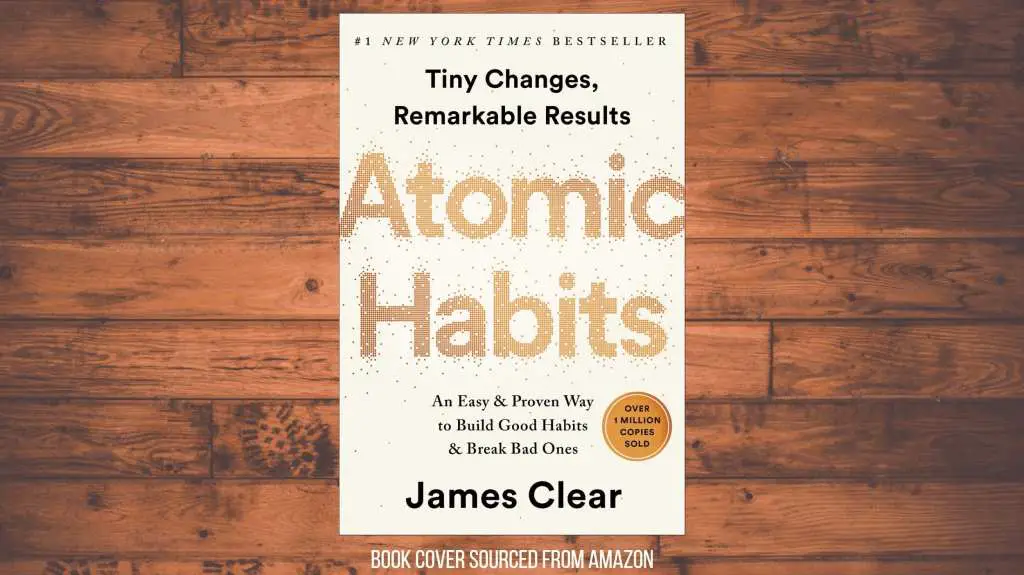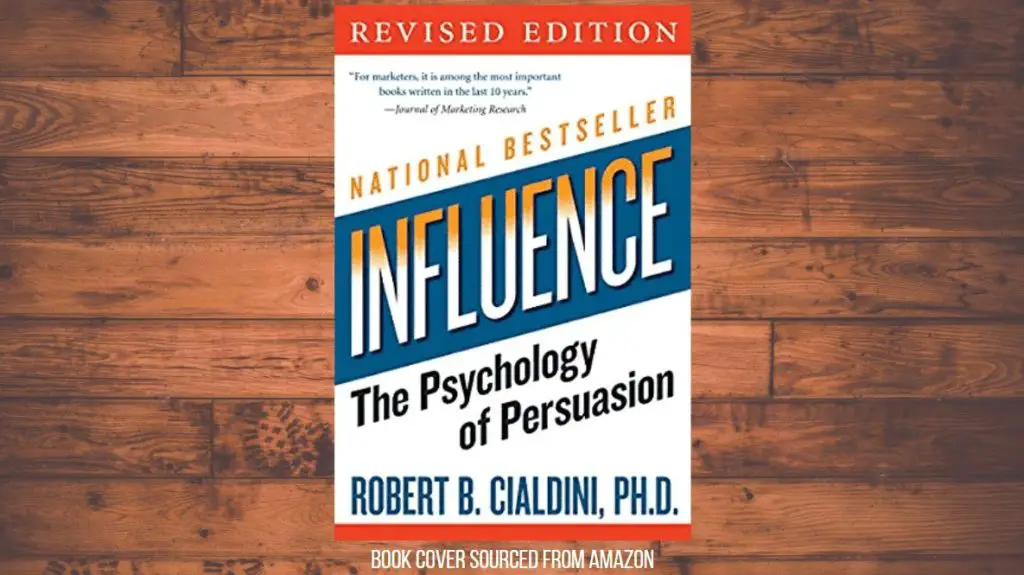This post may contain affiliate links, which means I’ll receive a commission if you purchase through my links, at no extra cost to you. Please read full disclosure for more information.
ABOUT
- Title: Atomic Habits
- Sub-title: An Easy & Proven Way to Build Good Habits & Break Bad Ones
- Author: James Clear
- About the author: James Clear is an author and speaker. He focuses on habits, decision-making, and continuous improvement of the self. James has worked with athletes, coaches, leaders, and other influential individuals and companies. His website jamesclear.com receives millions of visitors per month and hundreds of thousands of people subscribe to his newsletter.
- Pages: 320
- Published: 2018
- Link to book
HIGH-LEVEL SUMMARY
Atomic Habits is a New York Times Best Seller that has sold over 1 million copies and counting. The book has been wildly successful, which is a testament to the book’s quality, practicality, and impact.
James Clear is an expert on habit formation, behavior change, and continuous improvement. After a horrific baseball accident in his adolescent years, he had to develop these skills just to function normally and then to reach the potential he believed he had.
Atomic Habits is an operating manual that will teach you how to form good habits and break bad habits. The “atomic” in the title comes from the idea that tiny behaviors lead to remarkable results. This book doesn’t look to completely overhaul your habits overnight. Emphasis is on making consistent small steps in the right direction.
Whether you are looking to improve your health, money, productivity, or anything else, this book will give you the tips, tactics, and step-by-step plans to take action.
Topics covered in the book include:
- James Clear’s background story
- Why tiny changes make a big difference
- How to build better habits
- How to find and fix bad habits
- Why motivation is overrated
- The power your environment has on your habits
- The four cues of a habit and four laws of behavior change
- Ways to ease into a new habit so you stick with it
- Whether your genetics matter or not
- The way to stay motivated in life and work
RECOMMENDATION
If I had a list of books that I would most highly recommend to others, this would be near the top.
The reason is that it can be applicable to everyone in some way. You have habits for your finances, fitness, diet, work, relationships, and all other areas of your life.
Knowing what drives those habits and how you can change them has serious impact. Since reading this book, I am constantly monitoring my beliefs and my actions.
I also look for 1% improvements I can make to get better each day because I know the effects of compounding.
Even if you took away just 10% of what this book has to offer, I believe you would still see radical improvements to your life.
Check these related posts out next!
- Book Review: The Compound Effect by Darren Hardy
- Book Review: Can’t Hurt Me by David Goggins
- 15 Tips on How to Overcome Procrastination
- The Single Best Way to Improve Yourself and Grow in Your Career
- Detailed Morning Routine of a Young Working Professional
TOP 25 TAKEAWAYS
- In no particular order
1. An atomic habit is a little habit that is part of a larger system. Just as atoms are the building blocks of molecules, atomic habits are the building blocks of remarkable results.
2. The “aggregation of marginal gains” is a philosophy of searching for a tiny margin of improvement in everything you do. If you broke down your life into 100 components and improved each component by 1%, you would have a significant overall improvement when you put them all together.
3. It is so easy to overestimate the importance of one defining moment and underestimate the value of making small improvements on a daily basis. Too often, we convince ourselves that massive success requires massive action.
4. Habits are the compound interest of self-improvement. They seem to make little difference on any given day and yet the impact they deliver over the months and years can be enormous.
5. Your outcomes are a lagging measure of your habits. Your net worth is a lagging measure of your financial habits. Your weight is a lagging measure of your eating habits. Your knowledge is a lagging measure of your learning habits.
6. Forget about goals and focus on systems instead. Results have very little to do with the goals you set and nearly everything to do with the systems you follow. Goals are about the results you want to achieve. Systems are about the processes that lead to those results.
7. The 3 layers of behavior change are outcomes, process, and identity. You want to build a new identity and then work outwards. As an example, if your goal is to lose weight you would 1) identify as someone who is healthy and 2) implement processes that a healthy person would. If you do those two things, your outcome of losing weight should follow.
8. To change your identity: 1) Decide the type of person you want to be. 2) Prove it to yourself with small wins. Each small win, or positive habit, is a vote for the identity you want to adopt.
9. Habits are mental shortcuts learned from experience. Your brain is always working to preserve your conscious attention for whatever task is most essential.
10. The process of building a habit (good or bad) can be divided into four simple steps: cue, craving, response, and reward.
11. The 4 laws of behavior change for creating a good habit are: 1) Make it obvious. 2) Make it attractive. 3) Make it easy. 4) Make it satisfying. To break a bad habit, you would do the inverse of each law.
12. The process of behavior change always starts with awareness. You need to be aware of your habits before you can change them.
13. People who make a specific plan for when and where they will perform a new habit are more likely to follow through.
14. One of the best ways to build a new habit is to identify a current habit you already do each day and then stack your new behavior on top. This is called habit stacking.
15. Motivation comes and goes. Changing your environment matters more to your habits. Examples: Putting your gym clothes by the door will make you more likely to work out. Putting sodas at the back of the fridge will make you less likely to drink them. Environment is the invisible hand that shapes human behavior.
16. When scientists analyze people who appear to have tremendous self-control, it turns out those individuals aren’t all that different from those who are struggling. Instead, “disciplined” people are better at structuring their lives in a way that does not require heroic willpower and self-control.
17. Habits are a dopamine-driven feedback loop. Every behavior that is highly habit-forming—taking drugs, eating junk food, playing video games, browsing social media—is associated with higher levels of dopamine. Dopamine is released not only when you experience pleasure, but also when you anticipate it.
18. One of the deepest human desires is to belong. We imitate the habits of three groups in particular: The close. The many. The powerful.
19. Reframing your habits to highlight their benefits rather than their drawbacks is a fast and lightweight way to reprogram your mind and make a habit seem more attractive.
20. Each time you repeat an action, you are activating a particular neural circuit associated with that habit. This means that simply putting in your reps is one of the most critical steps you can take to encoding a new habit. It’s not “how long will it take?” but “how many reps will it take?”
21. It is human nature to follow the Law of Least Effort, which states that when deciding between two similar options, people will naturally gravitate toward the option that requires the least amount of work. Reduce friction for good habits. Increase friction for bad habits.
22. The Two-Minute Rule states that when you start a new habit, it should take less than two minutes to do. The point is to master the habit of showing up. Once you master showing up, you can extend beyond two minutes.
23. It’s easy for us to continue our bad habits and not adopt good habits because of time inconsistency. Our brain values the present more than the future. We can do things for years without the actions delivering a certain outcome. Ex: Smoking a cigarette doesn’t immediately give you cancer, but does immediately satisfy your craving if you are an addict.
24. The Goldilocks Rule: The way to maintain motivation and achieve peak levels of desire is to work on tasks of “just manageable difficulty.” Humans experience peak motivation when working on tasks that are right on the edge of their current abilities. Not too hard. Not too easy. Just right.
25. Review and reflect on your habits for long-term improvement. You may master a habit, but you can plateau if you don’t review and upgrade them.
WHAT I LIKED

Everything about habit is broken down
This book breaks everything about habits down to its simplest components. You’ll learn things such as the four cues of habits and the four laws of behavior change. Imagine someone giving you advice and saying “Stop your bad habits and start good habits.”
Would this be helpful? No, it’s vague and there is too much ambiguity for you to make a plan with that advice.
With the way things are broken down in Atomic Habits, the ambiguity is eliminated and you can clearly map out what you need to do to take action.
Offers actionable steps you can take
Atomic Habits doesn’t just talk about habits. It also acts as an operating manual, with directions the reader can follow. James Clear shares actionable steps the reader can take to begin improving their life.
All it takes is a commitment to changing things such as your beliefs, behavior, and environment. You can begin making changes immediately and set yourself on track to reap the benefits.
Author is living proof of the effects of good habits
In the introductory chapter, author James Clears shares his background story. He talks about a nasty baseball accident involving a bat to his head that did major damage. The injuries were a huge setback but ultimately taught him how important habits are.
Through consistent implementation of positive habits, he gained back control of his life. He was able to play baseball in college and earn a few accolades while he was at it. As for his career, his success speaks for itself.
His situation lead to him becoming an expert in this field.
BENEFITS TO YOUR LIFE AND CAREER

Create exponential change in any area of your life
All areas of your life are guided by habit; some good and some bad. By reading Atomic Habits, you’ll have the knowledge and tools you need to end or minimize your bad habits and begin or continue your good habits.
Consistent 1% improvements in your life can lead to exponential results over time.
Gain awareness of your automatic behaviors and actions
With this book, you’ll realize what behaviors and actions of yours are automatic. The exercise of tracking your daily habits is one way of gaining awareness. It will reveal to you what you are doing that is bad, good, or neutral.
Without an experience like this, you may never realize that you are on autopilot.
12 ACTIONS YOU SHOULD TAKE
1. Look for ways to implement the aggregation of marginal gains. Identify 1% improvements you can make. Getting 1% better each day for a year will result in you being 37 times better than day 1.
2. Instead of emphasizing goals, focus on creating bulletproof systems. The systems and processes you do every day will lead you to your goals.
3. Change the negative narratives about yourself. Saying “I’m not a morning person” or “I’m bad at math” are examples of you letting stories create your identity.
4. For the person you wish to become, identify the actions that move you towards becoming that person. Then do those actions.
5. Create a Habits Scorecard. Throughout your day, list all your daily habits. After compiling the habits of an average day, ask yourself if a habit is a good habit, a bad habit, or a neutral habit. This exercise raises awareness on what you are actually doing.
6. Formulate a plan for when and where you will perform a habit you are trying to adopt. This nearly doubles your chances of doing this task. Write out “I will [behavior] at [time] in [location]”
7. Use habit stacking to pair a new habit with a current habit you already do. “After I [current habit], I will [new habit].”
8. Design your environment for success. Make it harder to fall into bad habits and easier to start or maintain good habits.
9. Create a motivation ritual by doing something you enjoy immediately before a difficult habit.
10. Use the two-minute rule to ease into starting new habits. When you first start a habit, do the two-minute version of it first. This helps you master showing up.
11. Use a habit tracker for a visual representation of your work and progress. Create a chain of x’s for the amount of days you stick to good habits. The x’s form a chain. Don’t break the chain and watch it grow.
12. Find an accountability partner to help you stay on track. Knowing someone else is watching you can be a powerful motivator.
RESOURCES
Atomic Habits can be found on Amazon at this link here if you are interested in reading.



